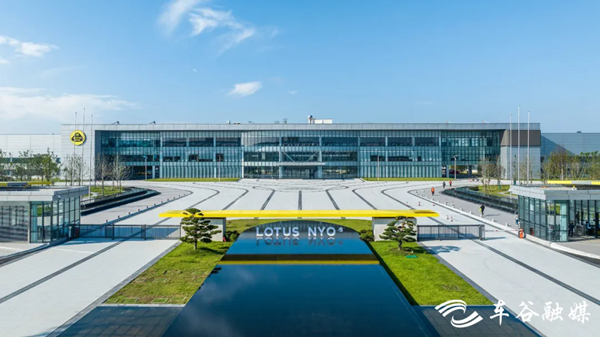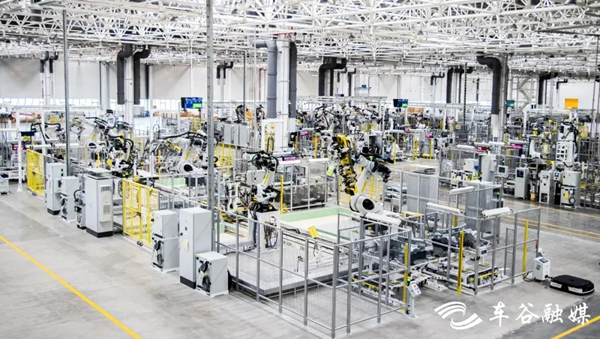

The Lotus global smart factory in the Wuhan Economic & Technological Development Zone. [Photo/WeChat account: whkfq]
The factory rooftop at Lotus NYO in the Wuhan Economic & Technological Development Zone (WEDZ) is adorned with an extensive array of photovoltaic solar panels. These panels generate 9,832.8 megawatt-hours of electricity annually, supplying a quarter of the factory's total power consumption.
Additionally, an artificial lake within the factory grounds serves as a reservoir, collecting rainwater for landscaping, toilet flushing, and vehicle washing, with nearly 10,000 cubic meters of rainwater reused in 2023.
These initiatives are just a glimpse into the sustainable practices of the Lotus global smart factory, which was recognized as a national green factory and one of Wuhan's first zero-waste factories in its first year of production. The factory's commitment to green principles is evident in every aspect of its operations.
By adopting eight carbon reduction measures — clean energy use, resource recycling, energy-efficient processes, digital management, intelligent production, energy-saving equipment, low-carbon logistics, and standardized processes — the factory aims to achieve carbon neutrality across its entire value chain.
Wang Zhengyi, senior sustainability expert at Lotus Technology, explained that energy-saving and emissions-reducing measures were integrated from the planning stage of the Lotus Global Smart Factory.
For instance, steel was chosen for building structures to create a more efficient space frame structure, and composite panels with superior insulation were used. The factory's roof features flexible waterproofing membranes and a smaller proportion of skylights, resulting in energy savings of more than 17 percent compared to traditional factories.
Photovoltaic systems installed on the factory roof, employee parking lots, and finished vehicle parking areas meet over 20 percent of the factory's electricity needs at full capacity.
The production process is equally energy-efficient. Fine spray techniques reduce energy and paint consumption. Optimized air compressor exhaust pressure saves on electricity, and fully servo-driven stamping lines decrease scrap rates and energy consumption while improving material utilization.
Modifications to air conditioning ducts in the paint mixing room allow for shared chilled water, reducing the need for dedicated chillers and leading to energy savings in equipment. The factory employs an EMS energy management system to cover primary and secondary metering, providing real-time monitoring of energy consumption and aiding in the analysis of anomalies.
Virtual commissioning technology minimizes energy use during actual commissioning, enhancing model introduction quality and efficiency. Intelligent processes throughout the production line ensure precise equipment operation, reducing standby energy consumption. The automated, intelligent, and efficient "goods-to-person" system further enables low-carbon logistics.
Moreover, Lotus extends its green manufacturing ethos to its suppliers, requiring them to reduce emissions. Specific guidelines have been set for greenhouse gas emissions, recycled material usage, and renewable electricity use by key raw material suppliers and Tier 1 suppliers, embedding the green manufacturing concept into every link of the supply chain.

The interior of a production workshop at the Lotus global smart factory in the Wuhan Economic & Technological Development Zone. [Photo/WeChat account: whkfq]